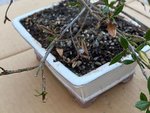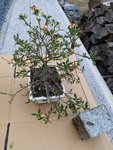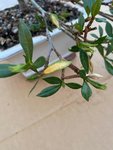Hello,
I have a couple of gardenias that are very important to me. Unfortunately they have been attacked by spider mites (diagnosed by local nursery). I did one treatment of malathion but wasn’t terribly ecstatic with it and swapped to talstar p. I’ve also added EB Stone Rhody food.
I have a couple of questions. How often should I spray the talstar? I know it’s going to take multiple applications but have no idea if I should spray every 3 days or 7.
The other question is about my leaves. They are still yellowing from the base. Is there anything else I should be doing?
I have a couple of gardenias that are very important to me. Unfortunately they have been attacked by spider mites (diagnosed by local nursery). I did one treatment of malathion but wasn’t terribly ecstatic with it and swapped to talstar p. I’ve also added EB Stone Rhody food.
I have a couple of questions. How often should I spray the talstar? I know it’s going to take multiple applications but have no idea if I should spray every 3 days or 7.
The other question is about my leaves. They are still yellowing from the base. Is there anything else I should be doing?






